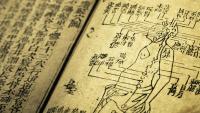Traditional Complementary/Alternative Medicine

Documenting Complementary/Alternative Medicine Use Worldwide
More than 80 percent of the world's children with cancer reside in developing countries, where survival rates are around 35 percent, compared with a 70 percent survival rate in low-and middle-income countries (LMIC). While children with cancer in both high- and low-income countries often use traditional complementary/alternative medicine (TCAM) including acupuncture, massage, energy medicine, and herbal remedies, the types and applications of TCAM vary by geographic region, ethnicity, and culture. There are several risks associated with the use of TCAM in cancer care including adverse interactions, reduced efficacy of cancer therapy, and delayed time to diagnosis. A family's belief in TCAM may also increase the likelihood of their abandoning life-saving treatment for their child's cancer. To better understand the role of TCAM in the LMIC, Elena J. Ladas, PhD, RD, the director of the Integrative Therapies Program at Columbia University Irving Medical Center (CUIMC), is documenting the use, reasons, and predictors of TCAM in several academic institutes around the globe in countries including Argentina, China, Guatemala, Honduras, Mexico, Nicaragua, Panama, and Uruguay. Her goal is to help investigators provide guidelines about TCAM’s use, support the development of education and research priorities, and identify region specific-variables associated with the use of TCAM.
Contact
Elena Ladas, MD
ejd14@cumc.columbia.edu